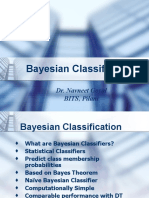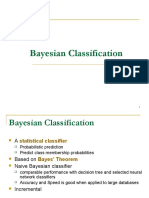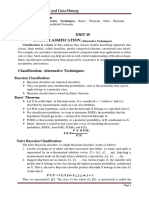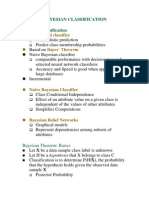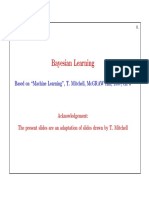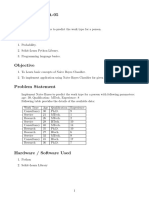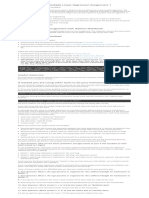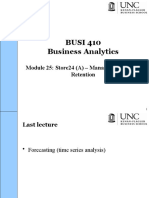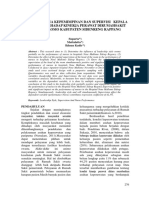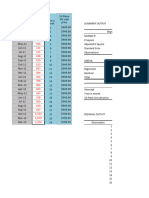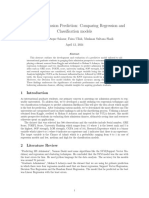0% found this document useful (0 votes)
8 views46 pagesBayesian Classification, Nearest
The document discusses classification methods in data mining, focusing on Bayesian classification and the Naïve Bayes classifier, which uses Bayes' theorem for probabilistic predictions. It explains how to estimate probabilities from data and highlights the advantages and disadvantages of Naïve Bayes, including its independence assumption. Additionally, it covers k-Nearest Neighbor classification, detailing its lazy learning approach and the importance of selecting an appropriate value for k.
Uploaded by
Sumit ChauhanCopyright
© © All Rights Reserved
We take content rights seriously. If you suspect this is your content, claim it here.
Available Formats
Download as PDF, TXT or read online on Scribd
0% found this document useful (0 votes)
8 views46 pagesBayesian Classification, Nearest
The document discusses classification methods in data mining, focusing on Bayesian classification and the Naïve Bayes classifier, which uses Bayes' theorem for probabilistic predictions. It explains how to estimate probabilities from data and highlights the advantages and disadvantages of Naïve Bayes, including its independence assumption. Additionally, it covers k-Nearest Neighbor classification, detailing its lazy learning approach and the importance of selecting an appropriate value for k.
Uploaded by
Sumit ChauhanCopyright
© © All Rights Reserved
We take content rights seriously. If you suspect this is your content, claim it here.
Available Formats
Download as PDF, TXT or read online on Scribd
/ 46



